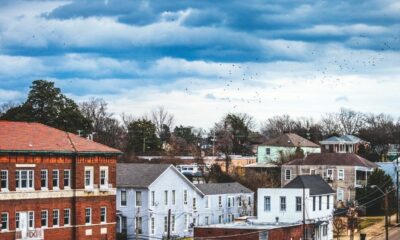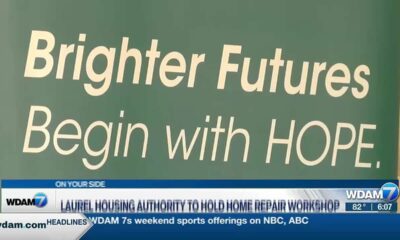Kaiser Health News
Why Even Public Health Experts Have Limited Insight Into Stopping Gun Violence in America
Christine Spolar
Wed, 06 Mar 2024 10:00:00 +0000
Gun violence has exploded across the U.S. in recent years — from mass shootings at concerts and supermarkets to school fights settled with a bullet after the last bell.
Nearly every day of 2024 so far has brought more violence. On Feb. 14, gunfire broke out at the Super Bowl parade in Kansas City, killing one woman and injuring 22 others. Most events draw little attention — while the injuries and toll pile up.
Gun violence is among America's most deadly and costly public health crises. But unlike other big killers — diseases like cancer and HIV or dangers like automobile crashes and cigarettes — sparse federal money goes to studying gun violence or preventing it.
That's because of a one-sentence amendment tucked into the 1996 congressional budget bill: “None of the funds made available for injury prevention and control at the Centers for Disease Control and Prevention may be used to advocate or promote gun control.”
Its author was Jay Dickey, an Arkansas Republican who called himself the “point man” for the National Rifle Association on Capitol Hill. And for nearly 25 years the amendment was perceived as a threat and all but paralyzed the CDC's support and study of gun violence.
Even so, a small group of academics have toiled to document how gun violence courses through American communities with vast and tragic outcomes. Their research provides some light as officials and communities develop policies mostly in the dark. It has also inspired a fresh generation of researchers to enter the field — people who grew up with mass shootings and are now determined to investigate harm from firearms. There is momentum now, in a time of rising gun injury and death, to know more.
The reality is stark:
Gun sales reached record levels in 2019 and 2020. Shootings soared. In 2021, for the second year, more people died from gun incidents — 48,830 — than in any year on record, according to a Johns Hopkins University analysis of CDC data. Guns became the leading cause of death for children and teens. Suicides accounted for more than half of those deaths, and homicides were linked to 4 in 10.
Black people are nearly 14 times as likely to die from firearm violence as white people — and guns were responsible for half of all deaths of Black teens ages 15 to 19 in 2021, the data showed.
Harvard research published in JAMA in 2022 estimated gun injuries translate into economic losses of $557 billion annually, or 2.6% of the U.S. gross domestic product.
With gun violence touching nearly every corner of the country, surveys show that Americans — whatever their political affiliation or whether they own guns or not — support policies that could reduce violence.
What Could Have Been
It is no secret that many strategies proposed today — from school metal detectors to enhanced policing, to the optimal timing and manner of safely storing guns, to restrictions on gun sales — have limited scientific ballast because of a lack of data.
It could have been otherwise.
U.S. firearm production surged in the late 1980s, flooding communities with more than 200 million weapons. In that era, Mark Rosenberg was the founding director of the CDC's National Center for Injury Prevention and Control and his agency, over time, was pivotal in helping to fund research on gun violence and public health.
Rosenberg thought then that gun violence could go the way of car crashes. The federal government spent $200 million a year on research to redesign roadways and cars beginning in the 1970s, he said, and had seen death rates plummeted.
“We said, ‘Why can't we do this with gun violence?'” Rosenberg said. “They figured out how to get rid of car crashes — but not cars. Why can't we do the same thing when it comes to guns?”
The Dickey Amendment sidelined that dream.
A study published in 1993 concluded that “guns kept in the home are associated with an increase in the risk of homicide,” a finding on risk factors that prompted an uproar in conservative political circles. To newly elected representatives in the midterm “Republican Revolution” of 1994, the research was a swipe at gun rights. The NRA stepped up lobbying, and Congress passed what's known as the Dickey Amendment in 1996.
Some Democrats, such as the influential John Dingell of Michigan (a onetime NRA board member who received the group's “legislative achievement award”), would join the cause. Dingell proposed his own bills, detailed last summer by The New York Times.
Under heavy political pressure, the CDC ousted Rosenberg in 1999. Soon after, some CDC administrators began alerting the NRA to research before publication.
“It was clearly related to the work we were doing on gun violence prevention,” Rosenberg, now 78, said of his job loss. “It was a shock.”
Those Who Persevered
The quarter-century spending gap has left a paucity of data about the scope of gun violence's health effects: Who is shot and why? What motivates the violence? With what guns? What are the injuries? Can suicides, on the rise from gunfire, be reduced or prevented with safeguards? Does drug and alcohol use increase the chances of harm? Could gun safeguards reduce domestic violence? Ultimately, what works and what does not to prevent shootings?
If researchers say they “lost a generation” of knowledge about gun violence, then American families lost even more, with millions of lives cut short and a legacy of trauma passed down through generations.
Imagine if cancer research had been halted in 1996 — many tumors that are now eminently treatable might still be lethal. “It's like cancer,” said Rebecca Cunningham, vice president for research at the University of Michigan, an academic who has kept the thread of gun research going all these years. “There may be 50 kinds of cancer, and there are preventions for all of them. Firearm violence has many different routes, and it will require different kinds of science and approaches.”
Cunningham is one of a small group of like-minded researchers, from universities across the United States, who refused to let go of investigating a growing public health risk, and they pushed ahead without government funds.
Garen Wintemute has spent about $2.45 million of his money to support seminal research at the University of California-Davis. With state and private funding, he created a violence prevention program in California, a leader in firearm studies. He has documented an unprecedented increase in gun sales since 2020 — about 15 million transactions more than expected based on previous sales data.
Daniel Webster at Johns Hopkins University focused on teenagers and guns — particularly access and suicides — and found that local police who coped with gun risks daily were willing to collaborate. He secured grants, even from the CDC, with carefully phrased proposals that avoided the word “guns,” to study community violence.
At Duke University, Philip J. Cook explored the underground gun market, interviewing people incarcerated in Chicago jails and compiling pivotal social science research on how guns are bought, sold, and traded.
David Hemenway, an economist and public policy professor at Harvard, worked on the national pilot to document violent deaths — knowing most gun deaths would be recorded that way — because, he said, “if you don't have good data, you don't have nothin'.”
Hemenway, writing in the journal Nature in 2017, found a 30% rise in gun suicides over the preceding decade and nearly a 20% rise in gun murders from 2014 to 2015. The data was alarming and so was the lack of preventive know-how, he wrote. “The US government, at the behest of the gun lobby, limits the collection of data, prevents researchers from obtaining much of the data that are collected and severely restricts the funds available for research on guns,” he wrote. “Policymakers are essentially flying blind.”
His work helped create the most ambitious database of U.S. gun deaths today — the National Violent Death Reporting System. Funded in 1999 by private foundations, researchers were able to start understanding gun deaths by compiling data on all violent deaths from health department, police, and crime records in several states. The CDC took over the system and eventually rolled in data from all 50 states.
Still, no federal database of nonfatal gun injuries exists. So the government would record one death from the Super Bowl parade shooting, and the 22 people with injuries remain uncounted — along with many thousands of others over decades.
Philanthropy has supported research that Congress would not. The Joyce Foundation in Chicago funded the bulk of the grants, with more than $33 million since the 1990s. Arnold Ventures' philanthropy and the Robert Wood Johnson Foundation have added millions more, as has Michael Bloomberg, the politician and media company owner. The Rand Corp., which keeps a tab of ongoing research, finds states increasingly are stepping up.
Timothy Daly, a Joyce Foundation program director, said he remembers when the field of gun harm was described by some as a “desert.” “There was no federal funding. There was slim private funding,” he said. “Young people would ask themselves: ‘Why would I go into that?'”
Research published in JAMA in 2017 found gun violence “was the least-researched” among leading causes of death. Looking at mortality rates over a decade, gun violence killed about as many people as sepsis, the data showed. If funded at the same rate, gun violence would have been expected to receive $1.4 billion in research funds. Instead, it received $22 million from across all U.S. government agencies.
There is no way to know what the firearm mortality or injury rate would be today had there been more federal support for strategies to contain it.
A Reckoning
As gun violence escalated to once unthinkable levels, Rep. Dickey came to regret his role in stanching research and became friends with Rosenberg. They wrote a pivotal Washington Post op-ed about the need for gun injury prevention studies. In 2016, they delivered a letter supporting the creation of the California Firearm Violence Research Center.
Both men, they emphasized, were NRA members and agreed on two principles: “One goal must be to protect the Second-Amendment rights of law-abiding gun owners; the other goal, to reduce gun violence.”
Dickey died in 2017, and Rosenberg has only kind words for him. “I did not blame Jay at all for what happened,” he said. The CDC was “under pressure from Congress to get rid of our gun research.”
As alarm over gun fatality statistics from diverse sectors of the nation — scientists, politicians, and law enforcement — has grown, research in the field is finally gaining a foothold.
Even Congress, noting the Dickey Amendment was not an all-out ban, appropriated $25 million for gun research in late 2019, split between the CDC — whose imperative is to research public health issues — and the National Institutes of Health. It's a drop in the bucket compared with what was spent on car crashes, and it's not assured. House Republicans this winter have pushed an amendment to once again cut federal funding for CDC gun research.
Still, it's a start. With growing interest in the field, the torch has passed to the next generation of researchers.
In November, Cunningham helped organize a national conference on the prevention of firearm-related harm. More than 750 academics and professionals in public health, law, and criminal justice met in Chicago for hundreds of presentations. A similar event in 2019, the first in 20 years, drew just a few dozen presentations.
“You can feel momentum,” Cunningham said at the conference, reflecting on the research underway. “There's a momentum to propel a whole series of evidence-based change — in the same way we have addressed other health problems.”
During a congressional hearing weeks later, Yale University School of Public Health Dean Megan L. Ranney bluntly described the rising number of gun deaths — noting the overwhelming number of suicides — as an alarm for lawmakers. “We are turning into a nation of traumatized survivors,” she said, urging their support for better data and research on risk factors.
Cassandra Crifasi, 41, was a high school sophomore when the Columbine massacre outside Littleton, Colorado, shook the country. She recently succeeded Webster, her mentor and research partner, as co-director of the Johns Hopkins Center for Gun Violence Solutions.
Crifasi has spent much of her career evaluating risk factors in gun use, including collaborative studies with Baltimore police and the city to reduce violence.
Raised in rural Washington state, Crifasi said she never considered required training in firearms an affront to the Second Amendment. She owns guns. In her family, which hunted, it was a matter of responsibility.
“We all learned to hunt. There are rules to follow. Maybe we should have everybody who wants to have a gun to do that,” she said.
Crifasi pointed to the 2018 shooting at Marjory Stoneman Douglas High in Parkland, Florida — which left 17 dead and 17 injured — as a turning point. Students and their parents took “a page out of Mothers Against Drunk Driving — showing up, testifying, being in the gallery where laws are made,” she said.
“People started to shift and started to think: This is not a third rail in politics. This is not a third rail in research,” Crifasi said.
Shani Buggs worked in corporate management before she arrived at Johns Hopkins to pursue a master's in public health. It was summer 2012, and a gunman killed 12 moviegoers at a midnight showing of “The Dark Knight Rises” in Aurora, Colorado. The town's pain led the national news, and “rightfully so,” Buggs said. “But I was in Baltimore, in East Baltimore, where there were shootings happening that weren't even consistently making the local news.”
Now violence “that once was considered out of bounds, out of balance — it is more and more common,” said Buggs who recently joined the California Firearm Violence Research Center as a lead investigator.
Buggs' research has examined anxiety and depression among youths who live in neighborhoods with gun violence — and notes that firearm suicide rates too have drastically increased among Black children and adolescents.
There is a trauma from hearing gunshots and seeing gun injuries, and daily life can be a thrum of risk in vulnerable communities, notably those largely populated by Black and Hispanic people, Buggs said. Last year, Buggs organized the Black and Brown Collective with a core group of about two dozen scientists committed to contextualizing studies on gun violence.
“The people most impacted by the gun violence we usually hear about in America look like our families,” she said of the collective.
“They are not resilient. People are just surviving,” Buggs said. “We need way more money to research and to understand and address the complexity of the problem.”
Illustration credit: Oona Tempest/KFF Health News. (Reference photos of Buggs, Cook, Crifasi, Cunningham, Daly, Hemenway, Webster: Christine Spolar for KFF Health News; Rosenberg: Getty Images; Wintemute: University of California-Davis.)
——————————
By: Christine Spolar
Title: Why Even Public Health Experts Have Limited Insight Into Stopping Gun Violence in America
Sourced From: kffhealthnews.org/news/article/gun-violence-data-public-health-experts-research-funds/
Published Date: Wed, 06 Mar 2024 10:00:00 +0000
Kaiser Health News
Millions Were Booted From Medicaid. The Insurers That Run It Gained Medicaid Revenue Anyway.
Phil Galewitz, KFF Health News
Fri, 26 Apr 2024 13:55:00 +0000
Private Medicaid health plans lost millions of members in the past year as pandemic protections that prohibited states from dropping anyone from the government program expired.
But despite Medicaid's unwinding, as it's known, at least two of the five largest publicly traded companies selling plans have continued to increase revenue from the program, according to their latest earnings reports.
“It's a very interesting paradox,” said Andy Schneider, a research professor at Georgetown University's McCourt School of Public Policy, of plans' Medicaid revenue increasing despite enrollment drops.
Medicaid, the state-federal health program for low-income and disabled people, is administered by states. But most people enrolled in the program get their health care through insurers contracted by states, including UnitedHealthcare, Centene, and Molina.
The companies persuaded states to pay them more money per Medicaid enrollee under the assumption that younger and healthier people were dropping out — presumably for Obamacare coverage or employer-based health insurance, or because they didn't see the need to get coverage — leaving behind an older and sicker population to cover, their executives have told investors.
Several of the companies reported that states have made midyear and retrospective changes in their payments to plans to account for the worsening health status of members.
In an earnings call with analysts on April 25, Molina Healthcare CEO Joe Zubretsky said 19 states increased their payment rates this year to adjust for sicker Medicaid enrollees. “States have been very responsive,” Zubretsky said. “We couldn't be more pleased with the way our state customers have responded to having rates be commensurate with normal cost trends and trends that have been influenced by the acuity shift.”
Health plans have faced much uncertainty during the Medicaid unwinding, as states began reassessing enrollees' eligibility and dropping those deemed no longer qualified or who lost coverage because of procedural errors. Before the unwinding, plans said they expected the overall risk profile of their members to go up because those remaining in the program would be sicker.
UnitedHealthcare, Centene, and Molina had Medicaid revenue increases ranging from 3% to 18% in 2023, according to KFF. The two other large Medicaid insurers, Elevance and CVS Health, do not break out Medicaid-specific revenue.
The Medicaid enrollment of the five companies collectively declined by about 10% from the end of March 2023 through the end of December 2023, from 44.2 million people to 39.9 million, KFF data shows.
In the first quarter of 2024, UnitedHealth's Medicaid revenue rose to $20.5 billion, up from $18.8 billion in the same quarter of 2023.
Molina on April 24 reported nearly $7.5 billion in Medicaid revenue in the first quarter of 2024, up from $6.3 billion in the same quarter a year earlier.
On April 26, Centene reported that its Medicaid enrollment fell 18.5% to 13.3 million in the first quarter of 2024 compared with the same period a year ago. The company's Medicaid revenue dipped 3% to $22.2 billion.
Unlike UnitedHealthcare, whose Medicaid enrollment fell to 7.7 million in March 2024 from 8.4 million a year prior, Molina's Medicaid enrollment rose in the first quarter of 2024 to 5.1 million from 4.8 million in March 2023. Molina's enrollment jump last year was partly a result of its having bought a Medicaid plan in Wisconsin and gained a new Medicaid contract in Iowa, the company said in its earnings news release.
Molina added 1 million members because states were prohibited from terminating Medicaid coverage during the pandemic. The company has lost 550,000 of those people during the unwinding and expects to lose an additional 50,000 by June.
About 90% of Molina Medicaid members have gone through the redetermination process, Zubretsky said.
The corporate giants also offset the enrollment losses by getting more Medicaid money from states, which they use to pass on higher payments to certain facilities or providers, Schneider said. By holding the money temporarily, the companies can count these “directed payments” as revenue.
Medicaid health plans were big winners during the pandemic after the federal government prohibited states from dropping people from the program, leading to a surge in enrollment to about 93 million Americans.
States made efforts to limit health plans' profits by clawing back some payments above certain thresholds, said Elizabeth Hinton, an associate director at KFF.
But once the prohibition on dropping Medicaid enrollees was lifted last spring, the plans faced uncertainty. It was unclear how many people would lose coverage or when it would happen. Since the unwinding began, more than 20 million people have been dropped from the rolls.
Medicaid enrollees' health care costs were lower during the pandemic, and some states decided to exclude pandemic-era cost data as they considered how to set payment rates for 2024. That provided yet another win for the Medicaid health plans.
Most states are expected to complete their Medicaid unwinding processes this year.
——————————
By: Phil Galewitz, KFF Health News
Title: Millions Were Booted From Medicaid. The Insurers That Run It Gained Medicaid Revenue Anyway.
Sourced From: kffhealthnews.org/news/article/medicaid-unwinding-insurer-revenue/
Published Date: Fri, 26 Apr 2024 13:55:00 +0000
Did you miss our previous article…
https://www.biloxinewsevents.com/california-is-investing-500m-in-therapy-apps-for-youth-advocates-fear-it-wont-pay-off/
Kaiser Health News
California Is Investing $500M in Therapy Apps for Youth. Advocates Fear It Won’t Pay Off.
Molly Castle Work
Fri, 26 Apr 2024 09:00:00 +0000
With little pomp, California launched two apps at the start of the year offering free behavioral health services to youths to help them cope with everything from living with anxiety to body acceptance.
Through their phones, young people and some caregivers can meet BrightLife Kids and Soluna coaches, some who specialize in peer support or substance use disorders, for roughly 30-minute virtual counseling sessions that are best suited to those with more mild needs, typically those without a clinical diagnosis. The apps also feature self-directed activities, such as white noise sessions, guided breathing, and videos of ocean waves to help users relax.
“We believe they're going to have not just great impact, but wide impact across California, especially in places where maybe it's not so easy to find an in-person behavioral health visit or the kind of coaching and supports that parents and young people need,” said Gov. Gavin Newsom's health secretary, Mark Ghaly, during the Jan. 16 announcement.
The apps represent one of the Democratic governor's major forays into health technology and come with four-year contracts valued at $498 million. California is believed to be the first state to offer a mental health app with free coaching to all young residents, according to the Department of Health Care Services, which operates the program.
However, the rollout has been slow. So slow that one of the companies has missed a deadline to make its app available on Android phones. Only about 15,000 of the state's 12.6 million children and young adults have signed up for the apps, and school counselors say they've never heard of them.
Advocates for youth question the wisdom of investing taxpayer dollars in two private companies. Social workers are concerned the companies' coaches won't properly identify youths who need referrals for clinical care. And the spending is drawing lawmaker scrutiny amid a state deficit pegged at as much as $73 billion.
An App for That
Newsom's administration says the apps fill a need for young Californians and their families to access professional telehealth for free, in multiple languages, and outside of standard 9-to-5 hours. It's part of Newsom's sweeping $4.7 billion master plan for kids' mental health, which was introduced in 2022 to increase access to mental health and substance use support services. In addition to launching virtual tools such as the teletherapy apps, the initiative is working to expand workforce capacity, especially in underserved areas.
“The reality is that we are rarely 6 feet away from our devices,” said Sohil Sud, director of Newsom's Children and Youth Behavioral Health Initiative. “The question is how we can leverage technology as a resource for all California youth and families, not in place of, but in addition to, other behavioral health services that are being developed and expanded.”
The virtual platforms come amid rising depression and suicide rates among youth and a shortage of mental health providers. Nearly half of California youths from the ages of 12 to 17 report having recently struggled with mental health issues, with nearly a third experiencing serious psychological distress, according to a 2021 study by the UCLA Center for Health Policy Research. These rates are even higher for multiracial youths and those from low-income families.
But those supporting youth mental health at the local level question whether the apps will move the needle on climbing depression and suicide rates.
“It's fair to applaud the state of California for aggressively seeking new tools,” said Alex Briscoe of California Children's Trust, a statewide initiative that, along with more than 100 local partners, works to improve the social and emotional health of children. “We just don't see it as fundamental. And we don't believe the youth mental health crisis will be solved by technology projects built by a professional class who don't share the lived experience of marginalized communities.”
The apps, BrightLife Kids and Soluna, are operated by two companies: Brightline, a 5-year-old venture capital-backed startup; and Kooth, a London-based publicly traded company that has experience in the U.K. and has also signed on some schools in Kentucky and Pennsylvania and a health plan in Illinois. In the first five months of Kooth's Pennsylvania pilot, 6% of students who had access to the app signed up.
Brightline and Kooth represent a growing number of health tech firms seeking to profit in this space. They beat out dozens of other bidders including international consulting companies and other youth telehealth platforms that had already snapped up contracts in California.
Although the service is intended to be free with no insurance requirement, Brightline's app, BrightLife Kids, is folded into and only accessible through the company's main app, which asks for insurance information and directs users to paid licensed counseling options alongside the free coaching. After KFF Health News questioned why the free coaching was advertised below paid options, Brightline reordered the page so that, even if a child has high-acuity needs, free coaching shows up first.
The apps take an expansive view of behavioral health, making the tools available to all California youth under age 26 as well as caregivers of babies, toddlers, and children 12 and under. When KFF Health News asked to speak with an app user, Brightline connected a reporter with a mother whose 3-year-old daughter was learning to sleep on her own.
‘It's Like Crickets'
Despite being months into the launch and having millions in marketing funds, the companies don't have a definitive rollout timeline. Brightline said it hopes to have deployed teams across the state to present the tools in person by midyear. Kooth said developing a strategy to hit every school would be “the main focus for this calendar year.”
“It's a big state — 58 counties,” Bob McCullough of Kooth said. “It'll take us a while to get to all of them.”
Brightline's contract states that the company was required to launch downloadable apps for iOS and Android phones by January, but so far BrightLife Kids is available only on Apple phones. Brightline said it's aiming to launch the Android version over the summer.
“Nobody's really done anything like this at this magnitude, I think, in the U.S. before,” said Naomi Allen, a co-founder and the CEO of Brightline. “We're very much in the early innings. We're already learning a lot.”
The contracts, obtained by KFF Health News through a records request, show the companies operating the two apps could earn as much as $498 million through the contract term, which ends in June 2027, months after Newsom is set to leave office. And the state is spending hundreds of millions more on Newsom's virtual behavioral health strategy. The state said it aims to make the apps available long-term, depending on usage.
The state said 15,000 people signed up in the first three months. When KFF Health News asked how many of those users actively engaged with the app, it declined to say, noting that data would be released this summer.
KFF Health News reached out to nearly a dozen California mental health professionals and youths. None of them were aware of the apps.
“I'm not hearing anything,” said Loretta Whitson, executive director of the California Association of School Counselors. “It's like crickets.”
Whitson said she doesn't think the apps are on “anyone's” radar in schools, and she doesn't know of any schools that are actively advertising them. Brightline will be presenting its tool to the counselor association in May, but Whitson said the company didn't reach out to plan the meeting; she did.
Concern Over Referrals
Whitson isn't comfortable promoting the apps just yet. Although both companies said they have a clinical team on staff to assist, Whitson said she's concerned that the coaches, who aren't all licensed therapists, won't have the training to detect when users need more help and refer them to clinical care.
This sentiment was echoed by other school-based social workers, who also noted the apps' duplicative nature — in some counties, like Los Angeles, youths can access free virtual counseling sessions through Hazel Health, a for-profit company. Nonprofits, too, have entered this space. For example, Teen Line, a peer-to-peer hotline operated by Southern California-based Didi Hirsch Mental Health Services, is free nationwide.
While the state is also funneling money to the schools as part of Newsom's master plan, students and school-based mental health professionals voiced confusion at the large app investment when, in many school districts, few in-person counseling roles exist, and in some cases are dwindling.
Kelly Merchant, a student at College of the Desert in Palm Desert, noted that it can be hard to access in-person therapy at her school. She believes the community college, which has about 15,000 students, has only one full-time counselor and one part-time bilingual counselor. She and several students interviewed by KFF Health News said they appreciated having engaging content on their phone and the ability to speak to a coach, but all said they'd prefer in-person therapy.
“There are a lot of people who are seeking therapy, and people close to me that I know. But their insurances are taking forever, and they're on the waitlist,” Merchant said. “And, like, you're seeing all these people struggle.”
Fiscal conservatives question whether the money could be spent more effectively, like to bolster county efforts and existing youth behavioral health programs.
Republican state Sen. Roger Niello, vice chair of the Senate Budget and Fiscal Review Committee, noted that California is forecasted to face deficits for the next three years, and taxpayer watchdogs worry the apps might cost even more in the long run.
“What starts as a small financial commitment can become uncontrollable expenses down the road,” said Susan Shelley of the Howard Jarvis Taxpayers Association.
This article was produced by KFF Health News, which publishes California Healthline, an editorially independent service of the California Health Care Foundation.
——————————
By: Molly Castle Work
Title: California Is Investing $500M in Therapy Apps for Youth. Advocates Fear It Won't Pay Off.
Sourced From: kffhealthnews.org/news/article/california-youth-teletherapy-apps-rollout-slow/
Published Date: Fri, 26 Apr 2024 09:00:00 +0000
Kaiser Health News
KFF Health News’ ‘What the Health?’: Abortion — Again — At the Supreme Court
Wed, 24 Apr 2024 20:30:00 +0000
The Host
Julie Rovner
KFF Health News
Julie Rovner is chief Washington correspondent and host of KFF Health News' weekly health policy news podcast, “What the Health?” A noted expert on health policy issues, Julie is the author of the critically praised reference book “Health Care Politics and Policy A to Z,” now in its third edition.
Some justices suggested the Supreme Court had said its piece on abortion law when it overturned Roe v. Wade in 2022. This term, however, the court has agreed to review another abortion case. At issue is whether a federal law requiring emergency care in hospitals overrides Idaho's near-total abortion ban. A decision is expected by summer.
Meanwhile, the Centers for Medicare & Medicaid finalized the first-ever minimum staffing requirements for nursing homes participating in the programs. But the industry argues that there are not enough workers to hire to meet the standards.
This week's panelists are Julie Rovner of KFF Health News, Joanne Kenen of the Johns Hopkins University's nursing and public health schools and Politico Magazine, Tami Luhby of CNN, and Alice Miranda Ollstein of Politico.
Panelists
Joanne Kenen
Johns Hopkins University and Politico
Tami Luhby
CNN
Alice Miranda Ollstein
Politico
Among the takeaways from this week's episode:
- This week's Supreme Court hearing on emergency abortion care in Idaho was the first challenge to a state's abortion ban since the overturn of the constitutional right to an abortion. Unlike previous abortion cases, this one focused on the everyday impacts of bans on abortion care — cases in which pregnant patients experienced medical emergencies.
- Establishment medical groups and doctors themselves are getting more vocal and active as states set laws on abortion access. In a departure from earlier political moments, some major medical groups are campaigning on state ballot measures.
- Medicaid officials this week finalized new rules intended to more closely regulate managed-care plans that enroll Medicaid patients. The rules are intended to ensure, among other things, that patients have prompt access to needed primary care doctors and specialists.
- Also this week, the Federal Trade Commission voted to ban most “noncompete” clauses in employment contracts. Such language has become common in health care and prevents not just doctors but other health workers from changing jobs — often forcing those workers to move or commute to leave a position. Business interests are already suing to block the new rules, claiming they would be too expensive and risk the loss of proprietary information to competitors.
- The fallout from the cyberattack of Change Healthcare continues, as yet another group is demanding ransom from UnitedHealth Group, Change's owner. UnitedHealth said in a statement this week that the records of “a substantial portion of America” may be involved in the breach.
Plus for “extra credit” the panelists suggest health policy stories they read this week that they think you should read, too:
Julie Rovner: NBC News' “Women Are Less Likely To Die When Treated by Female Doctors, Study Suggests,” by Liz Szabo.
Alice Miranda Ollstein: States Newsroom's “Loss of Federal Protection in Idaho Spurs Pregnant Patients To Plan for Emergency Air Transport,” by Kelcie Moseley-Morris.
Tami Luhby: The Associated Press' “Mississippi Lawmakers Haggle Over Possible Medicaid Expansion as Their Legislative Session Nears End,” by Emily Wagster Pettus.
Joanne Kenen: States Newsroom's “Missouri Prison Agency To Pay $60K for Sunshine Law Violations Over Inmate Death Records,” by Rudi Keller.
Also mentioned on this week's podcast:
- American Economic Review's “Is There Too Little Antitrust Enforcement in the U.S. Hospital Sector?” by Zarek Brot-Goldberg, Zack Cooper, Stuart Craig, and Lev Klarnet.
- KFF Health News' “Medical Providers Still Grappling With UnitedHealth Cyberattack: ‘More Devastating Than Covid,” by Samantha Liss.
Credits
Francis Ying
Audio producer
Emmarie Huetteman
Editor
To hear all our podcasts, click here.
And subscribe to KFF Health News' “What the Health?” on Spotify, Apple Podcasts, Pocket Casts, or wherever you listen to podcasts.
——————————
Title: KFF Health News' ‘What the Health?': Abortion — Again — At the Supreme Court
Sourced From: kffhealthnews.org/news/podcast/what-the-health-344-abortion-supreme-court-april-25-2024/
Published Date: Wed, 24 Apr 2024 20:30:00 +0000
Did you miss our previous article…
https://www.biloxinewsevents.com/mandatory-reporting-laws-meant-to-protect-children-get-another-look/
-
228Sports7 days ago
From Heartbreak to Hoop Dreams: Pascagoula Panthers Springboard from Semifinal Setback to College Courts
-
Local News2 days ago
Sister of Mississippi man who died after police pulled him from car rejects lawsuit settlement
-
Mississippi News6 days ago
2 dead, 6 hurt in shooting at Memphis, Tennessee block party: police
-
Mississippi News6 days ago
Forest landowners can apply for federal emergency loans
-
Mississippi Today2 days ago
At Lake High School in Scott County, the Un-Team will never be forgotten
-
Mississippi News5 days ago
Cicadas expected to takeover north Mississippi counties soon
-
Mississippi News4 days ago
Viewers make allegations against Hatley teacher, school district releases statement – Home – WCBI TV
-
Mississippi News6 days ago
Nationwide health alert issued for ground beef over potential E. coli risk






































